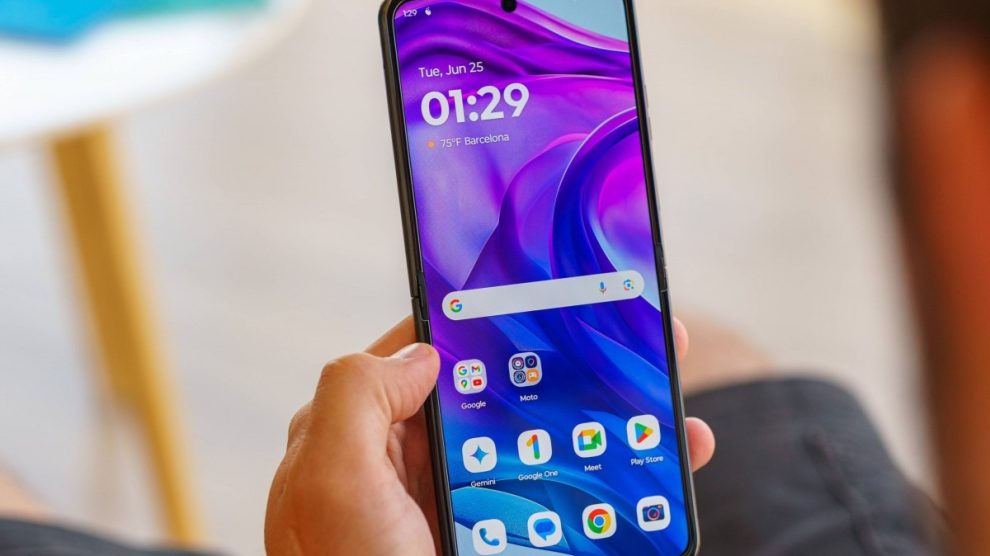The Motorola Razr series has carved out a unique place in the foldable smartphone market, blending nostalgia with modern innovation. As rumors swirl around the potential early release of the Motorola Razr 60 Ultra, excitement continues to build among enthusiasts and analysts. This report delves into what we know so far about this upcoming device, its potential features, and what an accelerated launch timeline could mean for Motorola and the broader foldable market.

The Razr 60 Ultra is expected to be a direct successor to Motorola’s Razr 40 Ultra, which gained attention for its sleek design, powerful hardware, and competitive pricing. As the foldable smartphone market becomes more competitive, particularly with Samsung, Huawei, and other major players continually raising the bar, Motorola’s decision to potentially expedite the release of its next flagship signals its intent to secure a stronger foothold in this segment. The strategy likely reflects both confidence in its product line and recognition of the increasing consumer demand for innovation in the foldable category.
One of the key selling points of the Razr series has been its unique take on the clamshell foldable design. Motorola’s approach has been to modernize the classic flip phone aesthetic while integrating cutting-edge technology. The Razr 60 Ultra is anticipated to further refine this concept, possibly featuring an improved hinge mechanism for smoother folding and enhanced durability. The hinge system has always been a critical component in foldable phones, with brands continually striving to strike a balance between functionality, longevity, and aesthetics.
In addition to design improvements, the Razr 60 Ultra is rumored to bring significant advancements in display technology. Reports suggest that Motorola could introduce a larger outer display, building on the success of the Razr 40 Ultra’s expansive external screen. This feature proved to be a standout, allowing users to interact with notifications, apps, and widgets without unfolding the device. By increasing the size and functionality of the outer display, Motorola could provide users with even greater convenience and flexibility, catering to those who prefer a quick-access experience for common tasks.
The inner foldable display is also expected to see enhancements, with speculation pointing to a higher refresh rate, improved resolution, and better overall durability. Motorola’s competitors have made significant strides in reducing creases and improving the visual quality of their foldable screens, and the Razr 60 Ultra will need to match or exceed these developments to remain competitive. Display performance is a critical factor for consumers considering foldable smartphones, and advancements in this area could be a decisive factor in the device’s success.
Performance-wise, the Razr 60 Ultra is likely to feature a flagship-grade chipset. Many analysts believe the device could be powered by Qualcomm’s Snapdragon 8 Gen 3 processor, a natural progression given Motorola’s use of high-end Snapdragon processors in previous models. This would position the Razr 60 Ultra as a powerhouse capable of handling demanding tasks such as gaming, multitasking, and content creation. Additionally, the inclusion of ample RAM and storage options is expected, with configurations possibly starting at 12GB of RAM and 256GB of storage.
Battery life and charging capabilities are other areas where the Razr 60 Ultra could shine. The Razr 40 Ultra already offered a competitive battery experience, and Motorola is likely to build on this foundation with a larger battery capacity and faster charging speeds. Wireless charging and reverse wireless charging are also anticipated, further enhancing the device’s versatility. These features align with current trends in flagship smartphones, ensuring that Motorola stays on par with consumer expectations.
Cameras have become a focal point in modern smartphones, and foldable devices are no exception. The Razr 60 Ultra is rumored to include significant upgrades to its camera system, with leaks hinting at a dual-camera setup featuring advanced sensors and improved image processing capabilities. The primary camera could feature a larger sensor for better low-light performance, while the secondary camera might offer ultra-wide or telephoto functionality. For selfies and video calls, the inner display could house an under-display or punch-hole camera, maintaining a seamless aesthetic while delivering high-quality results.
Software integration will also play a pivotal role in the Razr 60 Ultra’s appeal. Motorola has a reputation for delivering a near-stock Android experience, and the upcoming device is expected to launch with Android 14 or later. The company’s approach to software focuses on simplicity and ease of use while incorporating unique features tailored to the foldable form factor. Multitasking capabilities, app continuity between screens, and enhanced gesture controls are among the software enhancements that could elevate the user experience.
The decision to potentially launch the Razr 60 Ultra earlier than anticipated could be driven by several factors. One possibility is Motorola’s desire to capitalize on the momentum generated by the Razr 40 Ultra and maintain consumer interest in the brand. An earlier release could also be a strategic move to compete with rival devices set to launch in 2024, ensuring that Motorola remains top of mind for consumers considering a foldable phone.
The global foldable smartphone market has seen remarkable growth, with projections indicating continued expansion in the coming years. As more consumers embrace foldable technology, manufacturers are under increasing pressure to innovate and differentiate their offerings. The Razr 60 Ultra’s rumored features and early launch could position it as a strong contender in this evolving market, appealing to both existing Motorola fans and newcomers intrigued by foldable devices.
Pricing will undoubtedly play a significant role in the device’s reception. Motorola has historically priced its foldable phones competitively, and the Razr 60 Ultra is expected to follow suit. While exact pricing details remain unknown, the device will likely target a premium segment, balancing high-end features with affordability to attract a broad audience. Regional pricing variations are also anticipated, reflecting differences in market conditions and consumer preferences.
To provide a clearer picture of the Razr 60 Ultra’s potential impact, the following table compares key rumored features with those of its predecessor, the Razr 40 Ultra:
| Feature | Razr 40 Ultra | Razr 60 Ultra (Rumored) |
|---|---|---|
| Outer Display Size | 3.6 inches | Larger, possibly 4 inches |
| Inner Display Refresh Rate | 165Hz | 165Hz or Higher |
| Processor | Snapdragon 8+ Gen 1 | Snapdragon 8 Gen 3 |
| RAM | Up to 12GB | Up to 16GB |
| Battery Capacity | 3800mAh | Larger, ~4500mAh |
| Camera Setup | Dual 12MP + 13MP | Improved Dual Setup |
| Launch Price (Base) | ~$999 | Expected ~$1,199 |
The comparison highlights several areas where the Razr 60 Ultra could bring meaningful upgrades, particularly in display, performance, and battery life. These enhancements align with consumer demands and reflect Motorola’s commitment to staying competitive in a challenging market.
The rumored early launch of the Motorola Razr 60 Ultra has generated significant buzz, and for good reason. The device promises to deliver meaningful upgrades in design, performance, and functionality, addressing key pain points for foldable smartphone users. Whether you are an existing Razr owner or new to the foldable market, the Razr 60 Ultra represents an exciting opportunity to experience the latest in mobile innovation. As anticipation builds, all eyes will be on Motorola to see how it executes this ambitious launch and whether the device lives up to its potential.










Add Comment